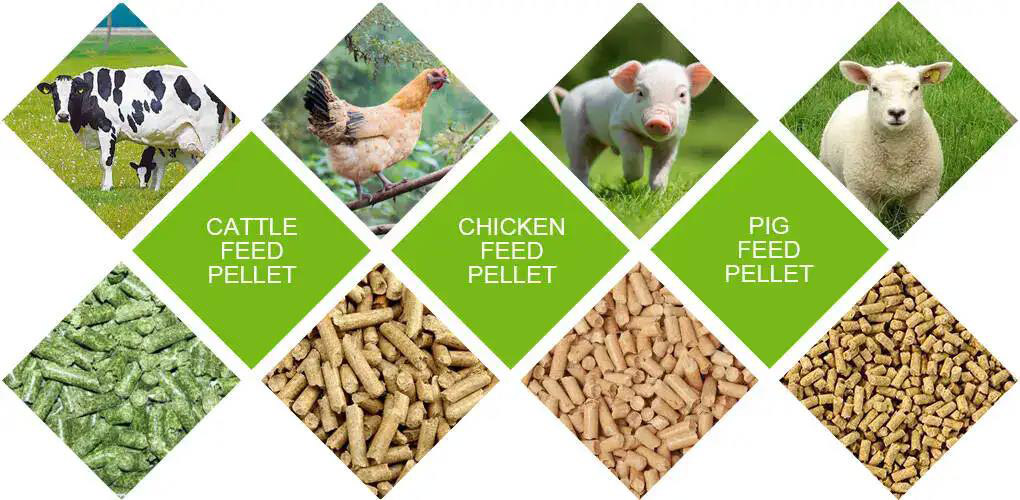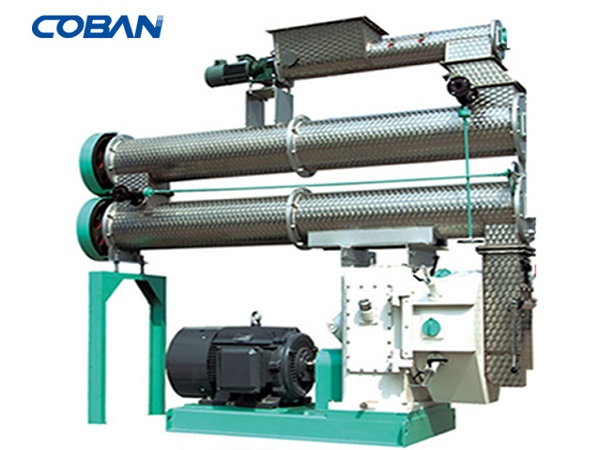feed pelletizer
A feed pelletizer is a piece of equipment used to produce animal feed. Its primary function is to mix various raw materials and then compress and shape them into pellet form.
feed pelletizer Introduction
A feed pelletizer is a piece of equipment used to produce animal feed. Its primary function is to mix various raw materials and then compress and shape them into pellet form. These machines typically utilize pressure and friction to pelletize the mixed feed, making it easy to store, transport, and consume, while also enhancing animals’ digestibility of the feed. Feed pelletizers play a crucial role in the livestock industry by producing various types and sizes of feed pellets to meet the nutritional requirements and growth stages of different animals.


Features of feed pelletizer
High-efficiency production
Feed pelletizers can efficiently process various raw materials into pelletized feed, improving production efficiency.
Versatility
They can be used for different types of raw materials and feed formulations to meet the nutritional needs of various animals.
High pellet uniformity
The pelletizer ensures uniform pellet size and even distribution of nutrients, facilitating animal digestion and absorption.
Strong adjustability
Users can adjust the parameters of the pelletizer, such as pellet size, density, and shape, to meet different requirements.
Energy-saving and environmentally friendly
Feed pelletizers typically feature energy-saving and environmentally friendly characteristics, reducing energy consumption and environmental pollution.
Easy operation and maintenance
The pelletizer is easy to operate and maintain, suitable for use in farms of various scales.
Stable quality of finished feed
Utilizing advanced pelletizing technology and quality control measures, the pelletizer produces consistently reliable quality feed.
Low production costs
Due to its high efficiency and energy-saving characteristics, the feed pelletizer can reduce production costs and improve economic benefits.


Structure of feed pelletizer
Feeding system
This is the inlet of the feed pelletizer, used to convey various raw materials into the interior of the pelletizer for processing. The feeding system typically includes a hopper, feeding device, and conveying mechanism.
Grinding system
The grinding system is responsible for grinding the raw materials into powder or crushing them into smaller particles for subsequent processing into feed pellets. It usually consists of a grinder, crusher, or pulverizer.
Mixing system
The mixing system is used to mix different raw materials according to the formula to ensure the even distribution of various nutrients in the feed pellets. It includes equipment such as a mixer or blender.
Pelleting system
The pelleting system is the core component of the feed pelletizer, responsible for compressing the mixed raw materials into pelletized feed products. It typically includes components such as molds, rollers, and pressure adjustment devices.
Cooling system
After pelleting, the feed pellets need to be cooled to prevent heat loss and pellet deformation. The cooling system usually includes equipment such as a cooler or air blower.
Screening system
The screening system is used to screen out qualified feed pellets and reprocess unqualified pellets. It typically includes equipment such as vibrating screens or pneumatic screens.
Conveying system
The conveying system transports the pelletized feed to packaging or storage equipment for subsequent processing or sale. It includes equipment such as conveyors, bucket elevators, or screw conveyors.


Advantages of feed pelletizer
High production efficiency
Feed pelletizers can efficiently process raw materials into pelletized feed, increasing production efficiency.
Low production costs
Feed produced using a pelletizer generally has lower production costs, saving on production expenses.
High pellet uniformity
Pellets produced by the pelletizer have uniform sizes and even distribution of nutrients, beneficial for animal digestion and absorption.
Nutritionally rich
Through scientific formulation and precise processing, feed produced by the pelletizer is rich in nutrients, meeting the growth needs of animals.
Easy storage and transportation
Pelletized feed is easy to store and transport, facilitating management and usage.
Raw material savings
The pelletizer can fully utilize raw materials, reducing waste.
Environmentally friendly and energy-saving
Pelletizers typically employ energy-saving and environmentally friendly processes and equipment, reducing energy consumption and environmental pollution.
High customizability
Users can adjust the parameters of the pelletizer to customize feed pellets of different types and specifications.
Simple operation
Pelletizers are easy to operate and suitable for operators with different levels of technical proficiency.
Improved farming profitability
High-quality feed produced by the pelletizer can enhance animal growth rates and weight gain, thereby improving farming profitability.
Application of feed pelletizer
Typically, the production of feed pelletizer uses raw materials such as corn, soybeans, wheat, and other nutrients as the formula. Our leaf pellet machine are specially used to produce feed for poultry, livestock, pigs, horses, cattle, sheep, chickens, ducks, goose and other animals.For different animals, with different growth cycles, (chicks, suckling pigs, calves, etc.), the feed pellet size required is different, but our feed production line only needs to replace ring molds with different apertures or use a pellet crumbler to reach the required size.

Parameter of feed pelletizer
| Model | Capacity | Main Motor Power | Feeder Motor Power | Conditioner Power | Dia. of Ring Die | Pellet Size |
| SZLH250 | 1-2T/H | 22KW | 0.75kw | 1.5kw | 250mm | 2-12mm |
| SZLH320 | 3-4T/H | 37KW | 1.5kw | 2.2kw | 320mm | 2-12mm |
| SZLH350 | 5-7T/H | 55KW | 1.5kw | 3kw | 350mm | 2-12mm |
| SZLH420 | 8-12T/H | 110KW | 1.5kw | 7.5kw | 420mm | 2-12mm |
| SZLH508 | 10-18T/H | 160KW | 2.2kw | 11kw | 508mm | 2-12mm |
| SZLH558 | 15-25T/H | 180KW | 2.2kw | 11kw | 558mm | 2-12mm |
| SZLH678 | 20-30T/H | 220KW | 2.2kw | 11kw | 678mm | 2-12mm |
| SZLH768 | 25-42T/H | 280KW | 2.2kw | 11kw | 768mm | 2-12mm |








